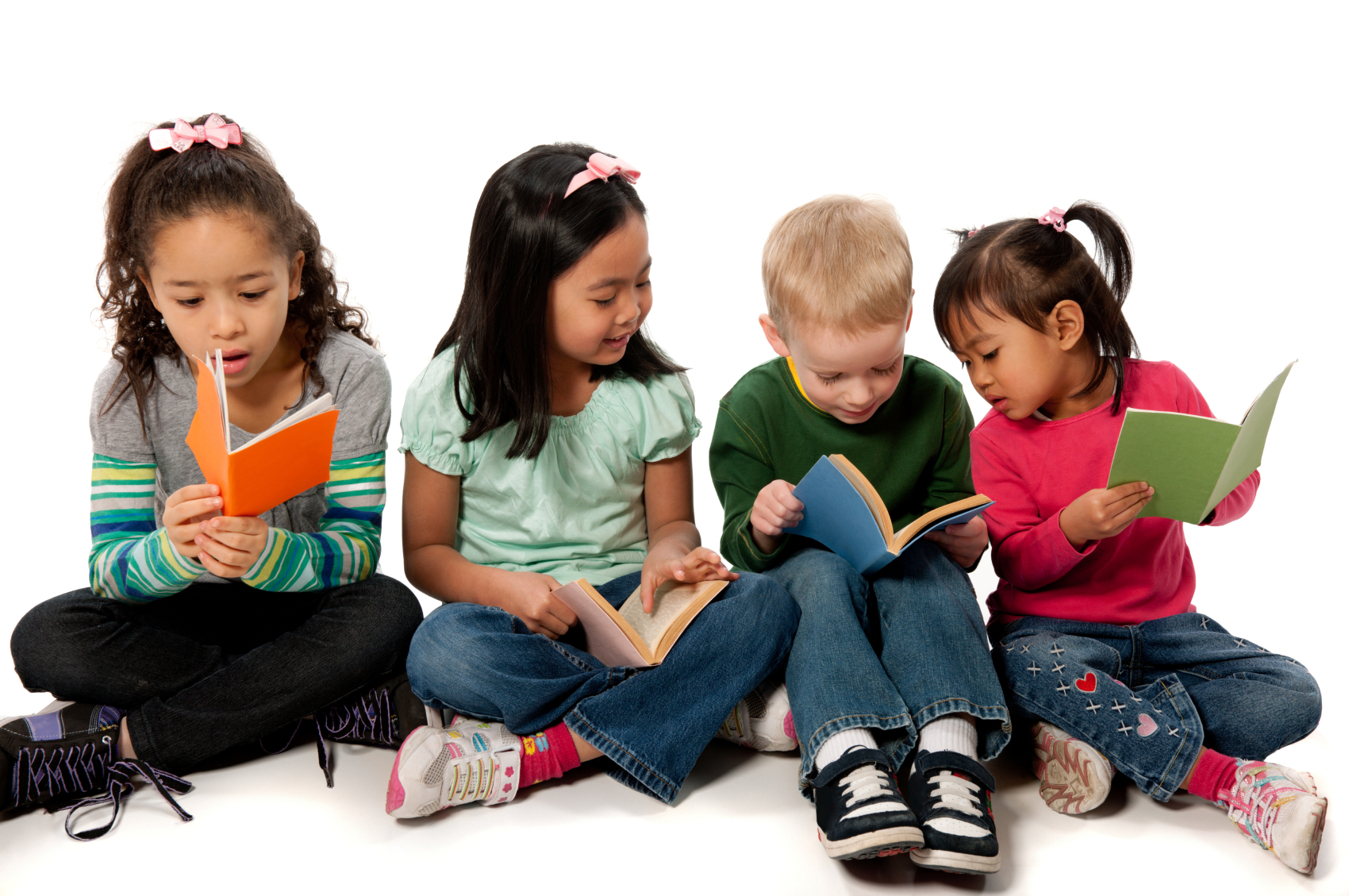You can help children think critically as you share your favorite books and stories.
The delightful process of sharing stories and books with young children provides the perfect opportunity to help children develop important critical-thinking skills. You can use story themes and characters as the springboard for critical thinking activities that are stimulating and inspiring. Read on for some quick and easy ways to encourage your children to THINK!
Take a Guess!
Since most young children are not yet reading words, they use the pictures on the cover and inside a book to help them choose a book, interpret the story, and “read” it in their own way. Before reading a new picture book, place a piece of paper or cardboard (with a “peep hole” cut in it) over the cover so that only part of the whole cover is exposed. Ask children to describe what they see and guess what the story might be about. Show children the cover to see how well they guessed. Children love this guessing game and enjoy using the cardboard “peep hole” together on pages inside the book too.
Play Storytime Sleuths
Young children love to use clues to solve a mystery. You can play deduction games with stories and books and favorite characters. For example, you might say, I am thinking of a character from several of our favorite books that is really big and likes to help people. As children suggest different characters they know, write the answers on chart paper. Add another clue. This character is also RED and barks. Who is it? CLIFFORD!
You can give clues for favorite fairy tales (Which story has someone who likes to eat and sleep at some else’s house? Someone who has blond hair? Goldilocks!) You can use picture books and ask clue questions about the illustrations. Children will also be using important visual discrimination skills that lead to success with reading.
Your Opinion Counts!
Young children can have strong opinions about stories and books. They want to hear some over and over again, while others go over like a lead balloon. The problem is that we can forget to ask children to verbalize their opinions beyond stating whether they like or dislike a book. Invite children to evaluate how a character handled a situation or the outcome of the story. For instance, after reading or telling the story of “Three Billy Goats Gruff”, ask, Which character was the smartest? Or If you were in the story, who would you rather be, the troll or one of the goats? Why? By asking specific questions, you involve children further with the content of the story. Their overall evaluation of a story or book becomes based on critical thinking as well as feeling. Over time, you can create a book review list in your group-time area. Children can choose their favorites in categories such as “great characters,” “exciting stories,” “scary stories,” “beautiful illustrations,” or whatever they choose as important elements to review.
Fact or Fantasy?
Preschool and kindergarten children are at a stage of development where they begin to notice the difference between fantasy and reality in books and stories. For example, it is not unusual when reading some of their favorite Franklin books for children to begin to question whether a turtle really could ride a bike and go to school!
Play a fact or fantasy game with children. Invite them to collect books about animals from the class library or from home. Ask them to examine the books and decide if they are factual or fantastical. Children can look at the covers and pages and search for clues that suggest it is a fantasy, such as animals wearing clothing. You might want to choose one book from each category as a model. Then read the books to see if the stories really are fantasy or factual. Another time, invite children to categorize books about trucks and machines or fruits and vegetables as fact or fantasy. Eventually move on to stories about people. These are much harder for children to categorize.
Sensational Sequels
Children can combine critical and creative-thinking skills by developing sequels to their favorite stories and nursery rhymes. This process encourages children to use what they know about a story or rhyme and apply it in a new sequence. Using familiar nursery rhymes you might ask, What happened after Jack and Jill feel down? What did Mary do when her lamb followed her to school? What could Old Mother Hubbard do to feed her dog? Tell a story about what happened next!
Create Your Own Ending
Similar to creating sequels is the process of inviting children to create an ending for a story. You can stop in the middle or at a crucial point, and ask children to predict what might happen next—or how a problem will get solved.
Asking Critical-Thinking Skills Questions
The best way to use children’s innate curiosity and to develop critical-thinking skills is to ask great questions:
Inference—using given and assumed evidence to draw a conclusion
- What do the pictures in the book tell you about the story? Notice the characters’ expressions. How do they feel? What might be happening?
Deduction—using clues to draw a conclusion
- What might the character do next? What clues make you think this is what the character might do?
Comparison—noticing the relationships between things
- How are the Three Billy Goats, Three Pigs, and Three Bears similar or different?
Evaluation—interpreting and judging information, story elements, and characterization
- Which characters in the story were kind? Where any characters mean? Which ones would you want to have as a friend?

